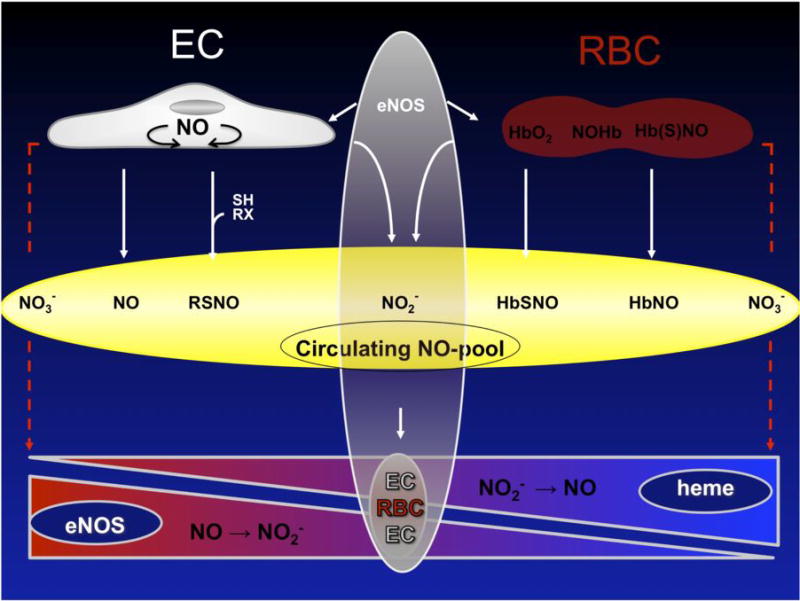Fig. 6.

Contribution of blood cell eNOS to regulation of the circulating nitric oxide (NO•) pool and blood pressure under normoxic and hypoxic conditions. The circulating NO• pool consists of various NO• related species that transport bioactive NO• in the mammalian circulation. These oxygenated and nitros(yl)ated NO• species are interconvertible. NO• bioactivity within this pool is regulated by the surrounding redox conditions at the site of delivery. Under hypoxic conditions NO• is formed in blood by the nitrite reductase activity of heme-containing proteins, including deoxyhemoglobin. Under normoxic conditions NO• can be produced by eNOS in endothelial cells (EC) and scavenged by oxyhemoglobin in red blood cells (RBC). An eNOS-derived NO• production in blood cells may offset oxyhemoglobin-dependent NO• scavenging, thereby safeguarding vasodilatory activity in adjacent normoxic vessels. Furthermore, eNOS activity in RBCs might contribute to their intracellular storage pool of “NO• equivalents”, such as nitrite. Thus, a fruitful cycle of continuous NO• formation in blood might arise from blood cell eNOS under normoxic conditions and deoxyhemoglobin-mediated reduction of nitrite under hypoxic conditions. RSH, thiols; RX, other reactive groups; RSNO, nitrosated thiols; HbO2, oxyhemoglobin; NO-Hb, nitrosylated hemoglobin; HbSNO, s-nitrosated hemoglobin; EC, endothelial cells; RBC, red blood cells.
